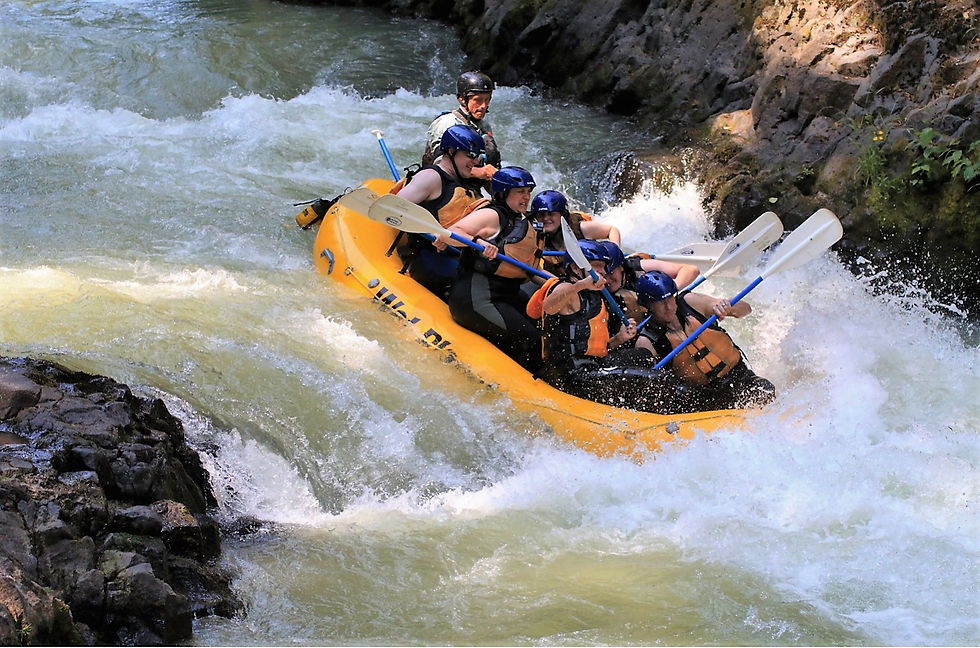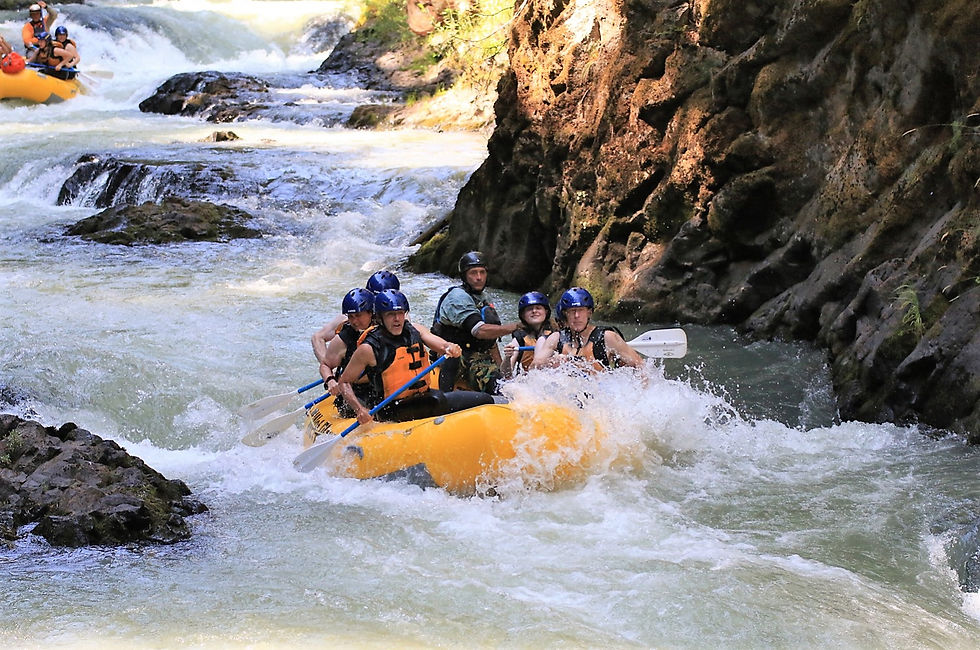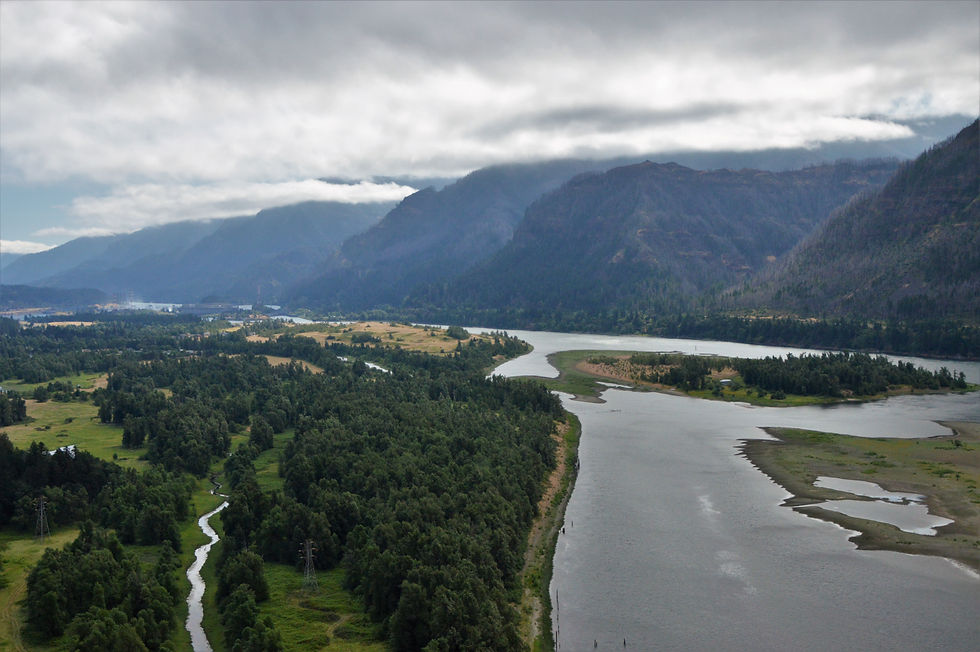Fun along the Columbia River Gorge, OR & WA
- Steve
- Jul 14, 2021
- 5 min read
Updated: 4 days ago
Spending time in the Columbia River Gorge was a great wrap up to our Washington and Oregon travel adventures. We had a fun chasing waterfalls and driving along the gorge in both directions. Click here to navigate to the 'Chasing Waterfalls in Oregon' blog.
The Columbia River Gorge is a canyon of the Columbia River that stretches for over 80 miles. The gorge began forming as far back as 17 to 12 million years ago. The gorge is a story of two massive floods.

The first flood occurred between 17 million and 6 million years ago. Lava began spilling from massive vents in the Earth's surface located along the Washington/Oregon/Idaho border 17 million years ago and flowed west following the Columbia River all the way to the ocean. Flows continued until about 6 million years ago and by the time they ended, lava flows covered over 105,000 square miles including parts of 5 states.

The cumulative effect was staggering. By the time the eruptions ceased, most of the Columbia Basin was coated with basalt rock at least one mile thick. The foothills and mountains on both sides of the Columbia River were formed by the lava that flowed for million of years through the river basin.

The second massive flood involved water, not lava. Toward the end of the last Ice Age, 18,000 to 12,000 years ago, glacial meltwater became trapped behind ice dams creating Lake Missoula that stretched hundreds of miles into Montana. This massive lake measured more than 200 miles across and one-half mile deep. Ultimately, the ice dam failed, causing perhaps the greatest floods ever in the history of the world. It's estimated the lake drained in a just a few days, sending a wall of water hundreds of feet high thundering downstream at 65 miles per hour with ten times more water than all the world’s rivers today.
The floods did not dramatically change the course of the river but they sculpted the Gorge. Raging waters over 800 feet high in places stripped all the sediment in its path and chiseled through weak and weathered layers of basalt. This process was repeated more than 40 times over the course of 2,500 years; floods changing the Gorge from a V-shaped river valley to a deep U-shaped valley with near-vertical walls of basalt with mountains rising from the river's edge.
All of lava and water has left behind the magnificent Columbia River Gorge that we see today.

In addition to the natural beauty, Columbia River Gorge’s unique geography makes it one of the most consistently windy spots anywhere. The consistently strong winds have also made the gorge one of the world's premier windsurfing locations.

Windsurfing conditions are best during the summer when large temperature gradients between the east and the west ends of the gorge drive westerly winds.

The combination of westerly winds and easterly river currents provide excellent windsurfing conditions.

Another outdoor adventure that's popular in the Gorge area is whitewater rafting. Whether you're looking for a gentle scenic tour or an adrenaline rush, whitewater, rafting in the Gorge is an experience you won't want to miss.
For our rafting we chose Wet Plant Whitewater located in White Salmon, Washington. We chose this group because they enter the White Salmon River from a upstream put-in located 2 miles upstream from the standard public launch site used by most other companies. These extra 2 miles adds more challenging class III/IV rapids and some of the most amazing canyon scenery on the river.

Fed from the glaciers of the majestic Mt. Adams and aquifers beneath surrounding orchards, the river water runs crystal clear all year long. The White Salmon River was once a huge, long lava tube. The roof of the tube has collapsed and the river runs now runs through narrow, volcanic basalt canyons with towering cliffs on both sides.

We don't have many pictures since it's not really a photo op experience when your paddling and hanging on as you travel over, around and though the rapids but Wet Planet photographers captured these great shots. The 8 miles of rafting ends with an optional 12-foot vertical plunge over the Husum Falls. Here is a view of the falls from a nearby bridge. Husum doesn't look that big from this angle.

Husum Falls is regarded as the 4th highest commercially run waterfall in the United States. From our boat, 2 people decided to leave the raft and not take on the falls. We dropped them off and our guide went through the instructions he would give as we approached the falls. After a few quick practice sessions, we took off and the navigated the raft to get the 'best experience'. According to our guide we hit the line exactly as he planned.

With our feet wedged under the seats/holders and our hands holding on to the ropes on the sides, we hit the falls. Sitting in front, we had the weird feeling of floating in air for a split second before gravity took over and we dropped like a rock.

We tried to hold our breath before being totally submerged but were only partially successful.

If we held the line the hydraulics of the falls would propel the raft up. If we hit it wrong it might snag the raft on the boulders and toss everyone out.

Success!
There is a saying among the guides that goes something like this. "I’m going to tell you about and prepare for every possible outcome, but I plan on this going so perfect that it will look easy."

The look on everyone's faces ... just a bit of an adrenaline rush.

A great ending to a fun day on the White Salmon River.

Before leaving the Gorge the next morning, we decided to do a quick hike/climb of Beacon Rock, an 848-foot basalt volcanic plug on the north shore of the Columbia River. The rock is the hard solidified magma that once was the core of the small cinder cone. The rest of the mountain was eroded away by the huge ice age floods that surged down the river. The United States Geological Survey recently determined the age of this volcano to be approximately 57,000 years old.
In 1904, an admirer named Charles Ladd purchased the rock in order to prevent the Army Corps of Engineers to blast it apart to use for a jetty along the river.

Biddle and a friend built a remarkable system of trails, ramps and stairs on the rock’s steeply inclining surface. The exceptionally complex trail system was under construction from 1915 until 1918. What took two men only three years to build still stands today. Today, reaching the summit of Beacon Rock requires begin climbing the narrow trail up 54 switchbacks.

Unfortunately, we had heavy morning fog so our views were cloaked in a layer of clouds.

A quick selfie and then a drive to Portland and an end to our Oregon trip.

First time I ever heard of windsurfing on a river. But I guess it makes sense with everything being bigger and wilder in the U.S. Here in the UK, which I know you've visited, even the biggest rivers wouldn't be wide enough for serious windsurfing, especially since they are so crowded towards the estuaries. Kudos to you for that white water rafting trip. Not surprised to hear two people left before the waterfalls. The pictures show what an extreme adventure you pulled off there and lived to tell the story. Beacon Rock looks fun, too.
Wow! I think I would have gotten off the raft before that waterfall, for sure! I admire you for sticking it out. I actually think the view you took from Beacon Rock with the clouds is gorgeous. I really want to visit Oregon, and I'll be sure to keep this itinerary in mind when I do.